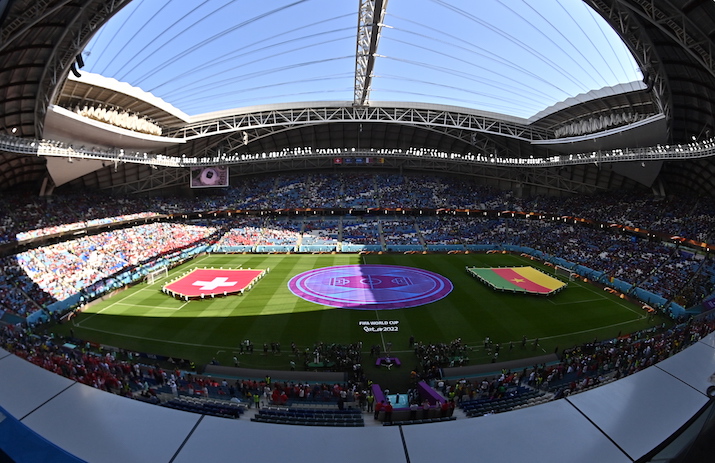FIFA World Cup 2022: Riedel Communications Pulls Out All the Stops
Centralized intercom system comprises multiple platforms, some IP-based
The 2022 FIFA World Cup event in Qatar could correctly be called the largest such event ever held in the smallest host country. The tiny Gulf nation transformed itself, at an estimated cost of $300 billion, into a sports destination, with eight world-class stadiums.
Another thing that was very big about the nearly month-long event, which ended on Dec. 18, was the scale of its comms infrastructure. Riedel Communications supplied the hardware and expertise for the extensive intercom system deployed to cover FIFA’s referee communications, the opening and closing ceremonies’ matches, the FIFA Fan Zone, various pre-match ceremonies, and related cultural events.
The supplier supported communications for Host Broadcast Services (HBS) and its International Broadcast Center (IBC); broadcast-rights holders, including Fox Sports; and vendors, including EMG and NEP.
Specifically, Riedel provided a centralized intercom system in the IBC with various remote intercom positions in the stadiums: Artist 1024, RSP 1232HL, Bolero, and Mediornet platforms. Notably, in a World Cup first, many of the platforms were IP-based: an integrated Bolero system in the IBC and a Bolero standalone system in the stadiums for wireless cameras, as well as for pre-match, opening/closing, and 3rd Place Match ceremonies. FIFA had its own intercom infrastructure in the IBC, featuring a Layer-2 connection to the stadiums and using Riedel systems.

For the 2022 FIFA World Cup, Riedel Communications supplied a centralized intercom system in the IBC with various remote intercom positions in the eight stadiums across Doha.
An integrated Bolero system was implemented in all eight stadiums for referee, officials, and team communications. A separate centralized integrated Bolero system was installed in each stadium for use during ceremonies and entertainment segments. They used both digital and analog RF connections, through Mediornet frames, for audio, video, intercom, and network signal distribution,
The system was networked, via EoIP tunnels, with two other locations for a total of 16 VoIP trunklines and/or VoIP key panels. The company’s general system approach was to be open to the end-client’s technical approach and supplied a fully AES67 IP based solution; the HBS approach was mainly IP-based. Other projects, such as the ceremonies, were a hybrid of digital and even analog systems.
Riedel’s main challenge during the event was coordination of the different Bolero networks and their users, as well as dealing with the complexity of the interoperability between systems and networks.
The main focus of the event’s comms was on proper coordination — of users, area, and time of use — based on the limited number of available frequencies, especially in the stadiums where the opening and closing ceremonies took place and which saw increased demand for spectrum. In consultation with the frequency authorities, Riedel developed a plan based on the use of two separate DECT bands to ensure safe operation for all stakeholders.
That meant coordinating multiple manufacturers and solutions, often within a single network, as well as finding staffers who not only could handle complex networks but were event-experienced. Communications are integral to an event of this magnitude, for which decisions can be time-critical.
